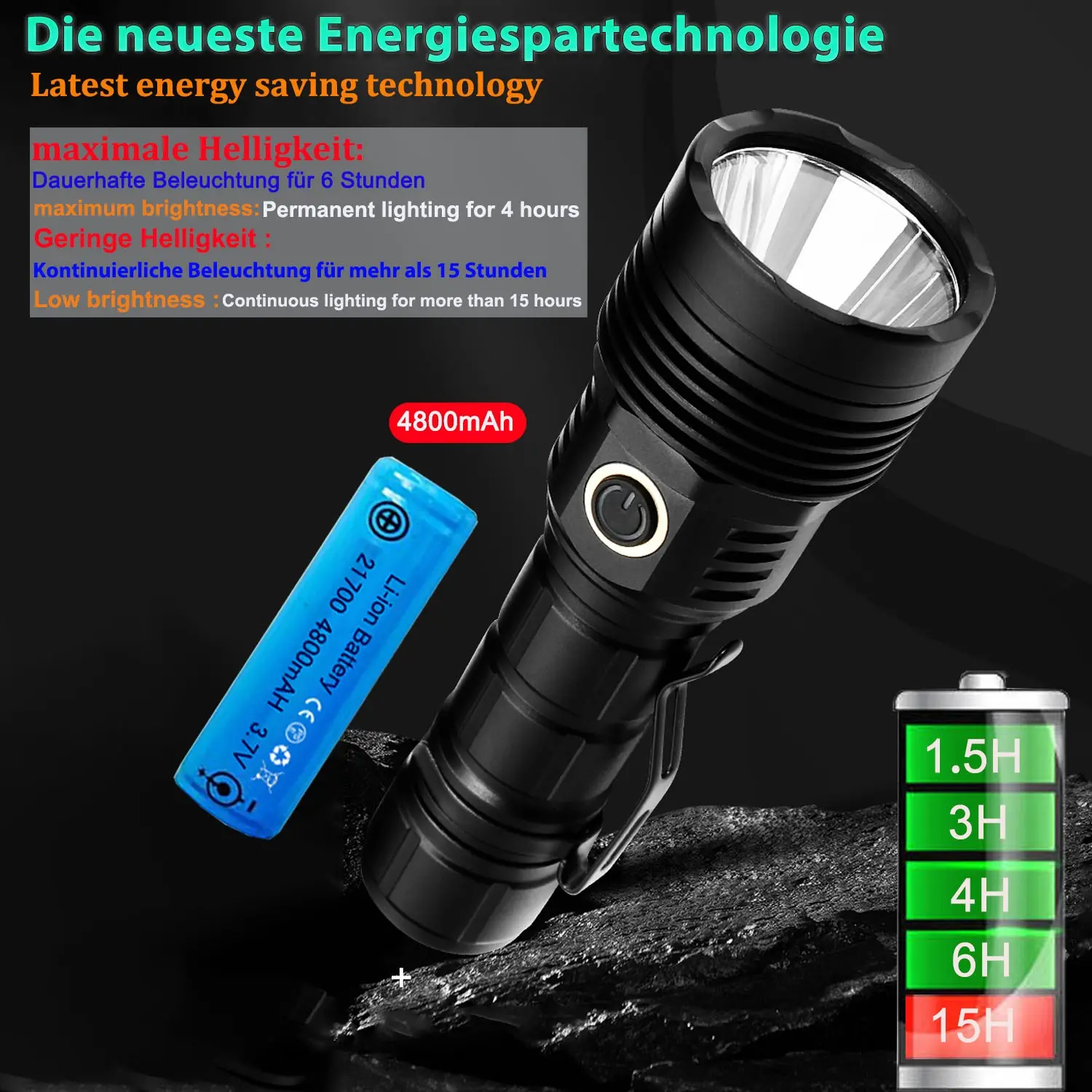Understanding the Importance of a Long-Lasting Flashlight
When it comes to outdoor activities such as camping, hiking, or even just exploring the great outdoors, having a reliable flashlight is essential. But what makes a flashlight truly reliable? The answer lies in its longevity. A long-lasting flashlight ensures that you have a dependable source of light throughout your adventures without worrying about frequent battery changes or sudden power failures.
In this section, we will delve into the concept of the longest lasting flashlight and explore the factors that determine its longevity. Whether you are an outdoor enthusiast, camper, or hiker, understanding the importance of a durable and long-lasting flashlight will help you make informed decisions when choosing the right one for your needs. So let's dive in and discover what makes a flashlight stand the test of time.
Factors Affecting Flashlight Longevity
When it comes to the longevity of a flashlight, one of the key factors to consider is the type of battery used. Different battery types have varying effects on the lifespan of a flashlight. Let's take a closer look at how battery types impact flashlight longevity.
Battery Types and Their Impact
Comparing different battery types and their effect on flashlight lifespan
There are several common battery options available for flashlights, including alkaline, lithium-ion, nickel-metal hydride (NiMH), and rechargeable batteries. Each type has its own advantages and disadvantages when it comes to flashlight longevity.
Alkaline Batteries: Alkaline batteries are widely available and affordable. They provide a decent lifespan but tend to drain quickly as they lose power gradually over time.
Lithium-Ion Batteries: Lithium-ion batteries offer a longer lifespan compared to alkaline batteries. They have a higher energy density, which means they can store more power in a smaller size. Additionally, lithium-ion batteries hold their charge well when not in use.
Nickel-Metal Hydride (NiMH) Batteries: NiMH batteries are rechargeable and have a longer lifespan than alkaline batteries. However, they may self-discharge over time if not used regularly.
Highlighting the most long-lasting battery choices
For those seeking the longest lasting flashlights, lithium-ion or rechargeable batteries are often the best options. These battery types provide extended runtimes and can be recharged multiple times before needing replacement. While they may require an initial investment, they offer cost savings in the long run by eliminating the need for frequent battery replacements.
By considering the impact of different battery types on flashlight lifespan, you can choose the most suitable option that aligns with your needs for durability and longevity.
Innovative Technologies for Enhanced Durability
When it comes to finding the longest lasting flashlight, considering the advancements in flashlight durability is crucial. Innovative technologies have been developed to improve the overall ruggedness and longevity of flashlights, making them more reliable in challenging outdoor conditions. Let's explore some of these advancements.
Advancements in Flashlight Durability
Exploring innovative technologies that improve flashlight durability
Flashlight manufacturers have introduced various features and technologies to enhance the durability of their products. These advancements include:
Impact Resistance: Flashlights with impact-resistant designs are built to withstand accidental drops and rough handling. They are constructed using durable materials such as aluminum or reinforced polymers, protecting the internal components from damage.
Water Resistance: Water-resistant flashlights are designed to withstand exposure to moisture, rain, or even submersion in water for a limited time. They feature sealed O-rings and gaskets to prevent water from entering the flashlight body.
Shockproof Capabilities: Shockproof flashlights are engineered to withstand vibrations and shocks caused by activities like hiking or off-road adventures. They can handle rough terrains without compromising their functionality.
Highlighting the latest advancements in flashlight design
In recent years, there have been significant advancements in flashlight design that contribute to improved durability. Some notable examples include:
Advanced LED Technology: Light Emitting Diode (LED) technology has revolutionized flashlights by providing brighter illumination while consuming less power. LED bulbs have a longer lifespan compared to traditional incandescent bulbs, making them ideal for long-lasting flashlights.
Heat Dissipation Systems: High-performance flashlights often incorporate heat dissipation systems that prevent overheating during prolonged use. These systems ensure optimal performance and extend the lifespan of both the LEDs and batteries.
By embracing these innovative technologies, manufacturers have created flashlights that can withstand harsh environments and deliver reliable performance over an extended period. When searching for the longest lasting flashlight, consider these advancements to ensure you find a durable and dependable lighting solution.
Choosing the Right Long-Lasting Flashlight
Selecting a long-lasting flashlight is essential for outdoor enthusiasts, campers, and hikers who rely on dependable lighting during their adventures. To make an informed choice, consider the following key factors:
Battery Type: Opt for lithium-ion or rechargeable batteries for extended runtimes and cost savings.
Durability Features: Look for flashlights with impact resistance, water resistance, and shockproof capabilities to withstand rugged conditions.
Innovative Technologies: Consider flashlights with advanced LED technology and heat dissipation systems for improved performance and longevity.
When searching for a reliable and durable flashlight, it's also helpful to read reviews, compare specifications, and seek recommendations from fellow outdoor enthusiasts. By considering these factors and tips, you can confidently choose a long-lasting flashlight that will illuminate your adventures for years to come.
See Also
A Comprehensive Guide to Selecting the Best Mini Flashlight
A Comprehensive Guide for Outdoor Enthusiasts: Selecting the Right Color Flashlight
A Comprehensive Guide to Selecting the Right Home Flashlight
A Homeowner's Guide: Optimal Light Color to Repel Bugs
Solar Camping Lantern T040: The Ultimate Solar Power Flashlight for Campers
